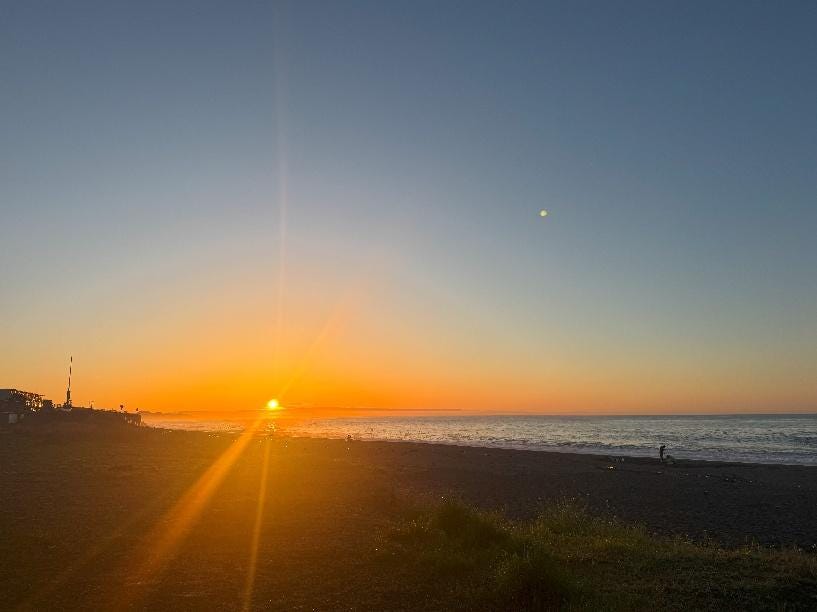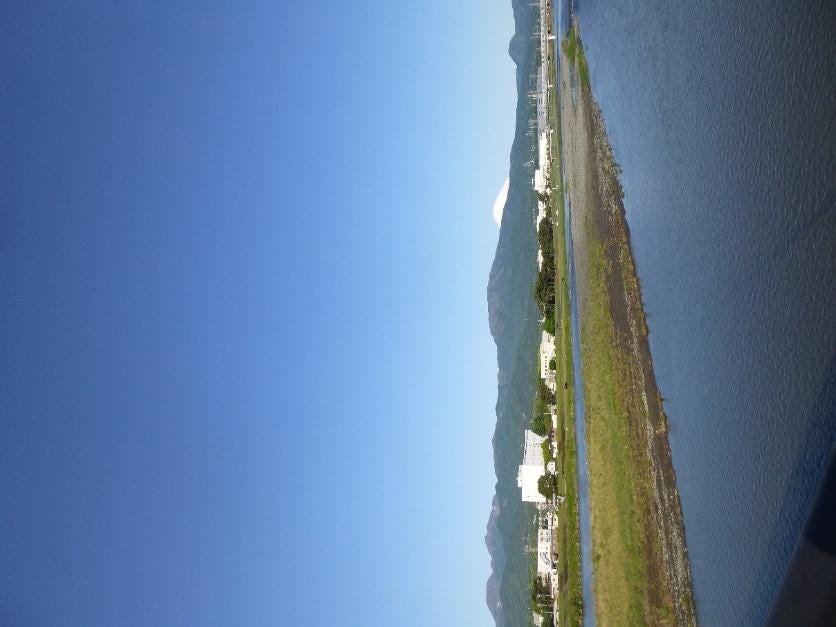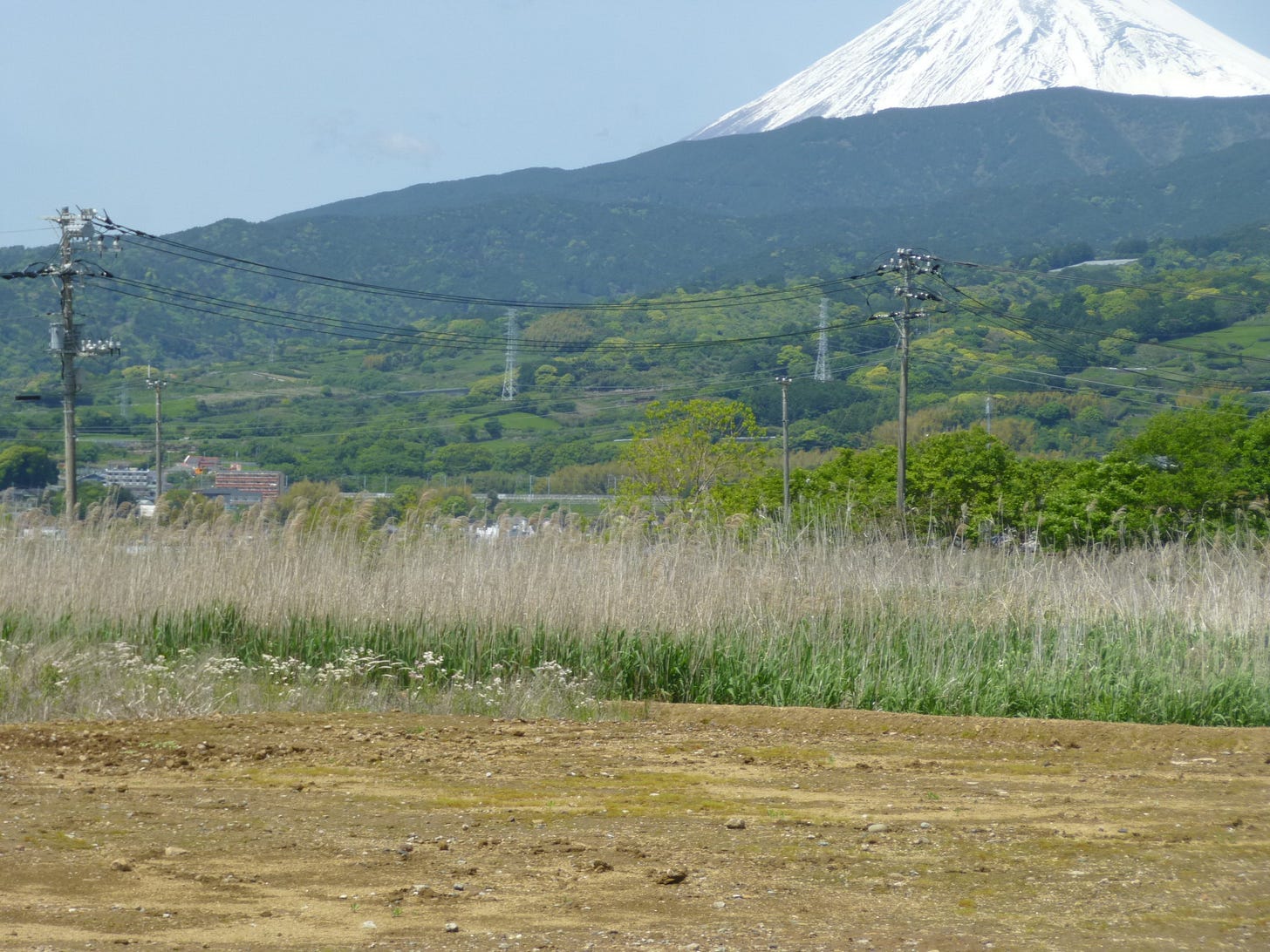Three Basic Shots in a research topic or media content
In Golden Week, I have only one day off, and I spend that time driving a car with my friend. We started with seeing the sunrise in Odawara, the first picture showing. There is a good beach to watch the sunrise by car, partly because of a free parking lot there.
Photo 1
Then, because my friend is a big fun of Japanese history, we decided to visit the places drawn in “53 stations of Tokaido” (in Japanese, “Tokaido 53-tsugi”), which is a set of Ukiyoe by Hiroshige Utagawa. However, since I have just one day, I cannot visit whole, 55 stations (there are 55 drawings in the artwork even though the title said “53”). I suppose it takes at least 4 or 5 days by car or train. If you want to walk Tokaido like in the Edo period, it would be at least 2 weeks before arriving at Kyoto, which is the end of Tokaido.
First, we found its statue in Odawara (Photo 2). The picture of Odawara station focused on the river named Sakawa river, and as a background, Hiroshige used Mt. Fuji, so we looked for similar scenery along Sakawa river. To be honest, we finally gave up finding the same composition as the drawing because there are houses and factories, but I took one photo (Photo 3) that includes the Sakawa river and Mt.Fuji (the white one on the right side is Mt. Fuji).
Photo2
Photo 3
After that, we went to Hakone, Mishima, Numazu, and Hara, from the tenth to thirteenth station in Tokaido. The 4th picture shows some fishing in the Ashi lake near the old Hakone checkpoint in the early morning. I find this picture very beautiful and seems like a drawing. We visited 4 stations, but we found the statue just near Mishima station. In Hiroshige’s work, Mishima shrine is drawn as a symbol of the station. Thus, we visited the Mishima shrine. Mishima shrine has a great gate, Torī, facing to the road. Despite a big holiday in Japan, there were not so many people in the shrine. If you want to avoid crowds during the holiday, I recommend you visit there. You can also eat famous fried mashed potatoes.
Photo 4
Photo 5
Finally, we arrived at Yoshihara, and then at Kambara, where is the last place for this trip. Yoshihara was a famous place for “Left-side Fuji” in Edo period. The reason why it was called “Left-side” is because Fuji was seen from the left side of the trees on the street of Yoshihara. In Kambara, at last, we found the statue. There is a cherry blossom tree, but the flowers have already disappeared. I wish I could have been there during the spring break! Anyway, the last picture focuses on Fuji, and I imitate the composition of Hiroshige’s artwork, which draws the mountain over the frame to imply how huge Mt. Fuji is.
Photo 6
For the next break, I want to go to every station of old Tokaido.








